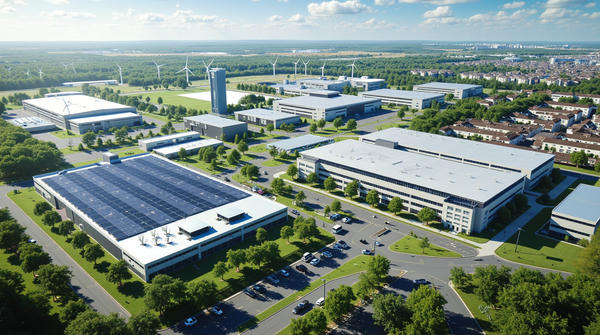V2G: How to turn your fleet into a virtual power plant

Imagine a world where electric vehicles are not just means of transport, but also key players in the energy transition. What if your fleet of vehicles became a virtual power plant, capable of supplying energy to the grid while reducing your costs? That's exactly what Vehicle-to-Grid (V2G) technology offers. But how does it work, and what are the concrete examples that illustrate its potential in Europe? 🌍
What is V2G and why is it essential?
V2G, or Vehicle-to-Grid, enables electric vehicles to return the energy stored in their batteries to the power grid when parked. This helps to balance electricity supply and demand, particularly during peak periods, while optimizing the use of renewable energies such as solar and wind power.
The benefits are many: reduced CO2 emissions, lower energy costs for businesses, and greater resilience for power grids. Yet questions remain: how do we manage the technical constraints? What are the long-term impacts on batteries? And above all, what initiatives are currently demonstrating that this technology is viable?
Concrete examples from Europe illustrate the potential of V2G
France: The Dunkirk pilot project
In Dunkirk, an ambitious pilot project has been launched to demonstrate the effectiveness of V2G. A fleet of municipal electric vehicles has been equipped with the technology that enables electricity to be fed back into the grid. The results are promising: lower energy bills for the municipality and a contribution to grid stabilization during peak consumption periods. The data collected will be used to develop similar projects across the country. 📊
Belgium: The Leuven experiment
In Belgium, the city of Leuven is also testing V2G with a fleet of electric buses. When parked, these vehicles inject energy into the local grid. This initiative not only improves energy management, it also raises awareness among citizens and local businesses of the importance of the energy transition. A double win!
Spain: Valencia and its smart charging stations
In Spain, Valencia has developed a network of intelligent charging stations that integrate V2G. These stations enable electric vehicles to recharge and return unused energy. The result? Better integration of renewable energies into the local energy mix, and optimized costs for users.
Netherlands: Amsterdam, a V2G pioneer
Amsterdam, already recognized for its leadership in sustainability, is banking heavily on V2G. The city has installed two-way charging stations in several neighborhoods, enabling residents to actively participate in energy management by using their electric vehicles. This project, supported by local businesses, shows how a collaborative approach can maximize the benefits of V2G.
Germany: Hamburg and its fleet of electric cabs
In Hamburg, a pilot initiative has been launched to integrate V2G into a fleet of electric cabs. These vehicles, equipped with bi-directional systems, enable energy to be redistributed to the grid during rest periods. The project, funded by the German Ministry of Energy and supported by local companies such as Stromnetz Hamburg, aims to demonstrate how V2G can be integrated into urban services. To find out more, visit
Italy: Turin and its "e-Mobility Hub" project
Turin is experimenting with V2G through the "e-Mobility Hub" project. This program, run in partnership with the Polytechnic University of Turin, uses electric vehicles from local companies to integrate renewable energies into the grid. The project also aims to assess the impact on battery life, with results available on the official website :
Netherlands: Utrecht and its "Smart Solar Charging" community
In Utrecht, an innovative project combines V2G with solar panels. Residents can store solar energy in their electric vehicles and return it to the grid as needed. This project is one of the most advanced in Europe, supported by the "Smart Solar Charging" community. Details are available at
What challenges remain?
While the examples cited show that V2G is promising, a number of technical and economic challenges remain. Battery wear and tear, equipment standardization and the need for a clear legislative framework remain obstacles to be overcome. However, technological innovation and political will offer grounds for optimism. 💡
And what do you think?
V2G represents a unique opportunity to transform our vehicle fleets into tools at the service of the energy transition. But to go further, your opinion counts. So, are you ready to embrace this technology and imagine a future where every vehicle becomes a key player in the energy network? 🤔 Share your thoughts and let's start the conversation!



